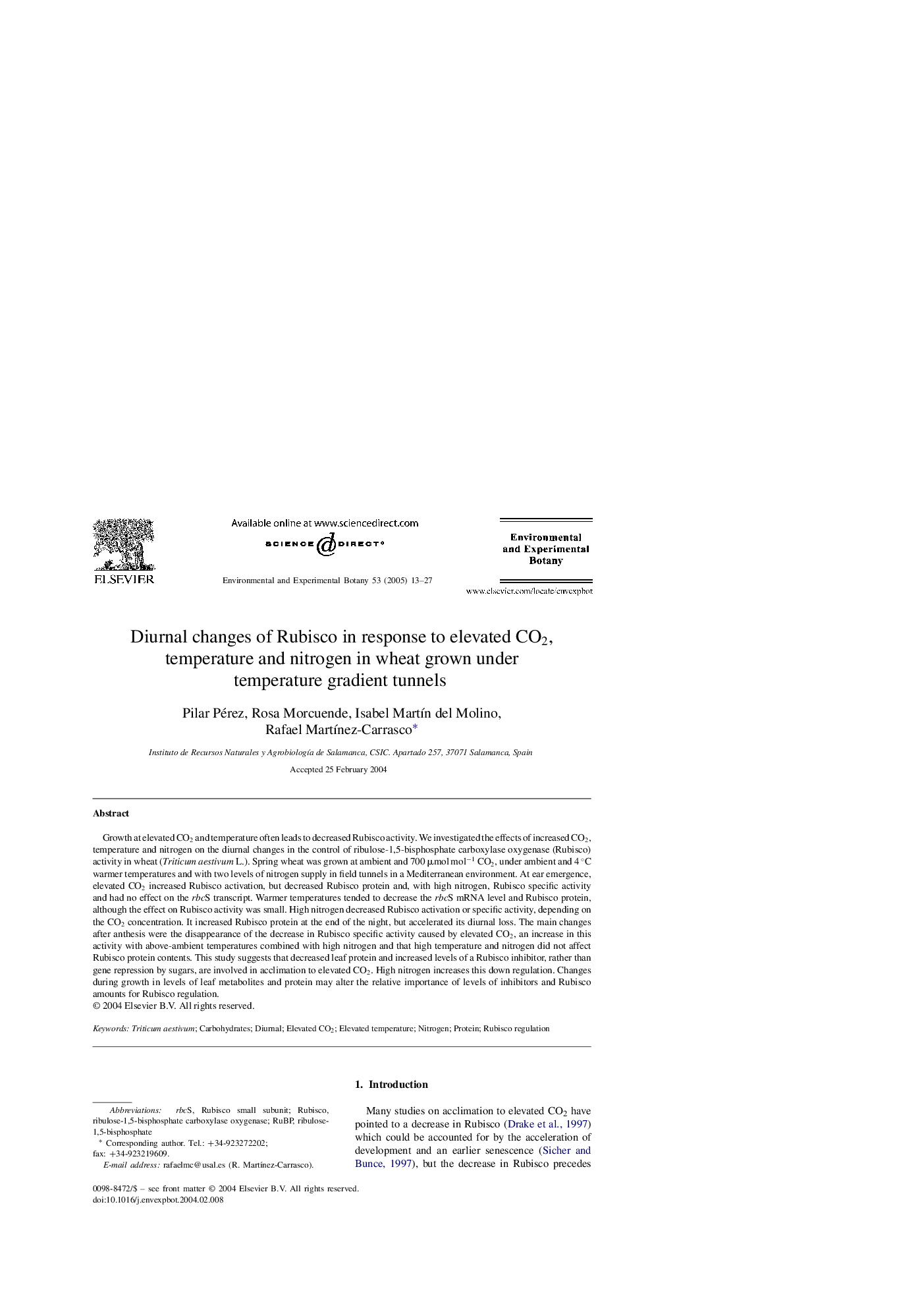| Article ID | Journal | Published Year | Pages | File Type |
|---|---|---|---|---|
| 9485722 | Environmental and Experimental Botany | 2005 | 15 Pages |
Abstract
Growth at elevated CO2 and temperature often leads to decreased Rubisco activity. We investigated the effects of increased CO2, temperature and nitrogen on the diurnal changes in the control of ribulose-1,5-bisphosphate carboxylase oxygenase (Rubisco) activity in wheat (Triticum aestivum L.). Spring wheat was grown at ambient and 700 μmol molâ1 CO2, under ambient and 4 °C warmer temperatures and with two levels of nitrogen supply in field tunnels in a Mediterranean environment. At ear emergence, elevated CO2 increased Rubisco activation, but decreased Rubisco protein and, with high nitrogen, Rubisco specific activity and had no effect on the rbcS transcript. Warmer temperatures tended to decrease the rbcS mRNA level and Rubisco protein, although the effect on Rubisco activity was small. High nitrogen decreased Rubisco activation or specific activity, depending on the CO2 concentration. It increased Rubisco protein at the end of the night, but accelerated its diurnal loss. The main changes after anthesis were the disappearance of the decrease in Rubisco specific activity caused by elevated CO2, an increase in this activity with above-ambient temperatures combined with high nitrogen and that high temperature and nitrogen did not affect Rubisco protein contents. This study suggests that decreased leaf protein and increased levels of a Rubisco inhibitor, rather than gene repression by sugars, are involved in acclimation to elevated CO2. High nitrogen increases this down regulation. Changes during growth in levels of leaf metabolites and protein may alter the relative importance of levels of inhibitors and Rubisco amounts for Rubisco regulation.
Keywords
Related Topics
Life Sciences
Agricultural and Biological Sciences
Ecology, Evolution, Behavior and Systematics
Authors
Pilar Pérez, Rosa Morcuende, Isabel MartıÌn del Molino, Rafael MartıÌnez-Carrasco,
